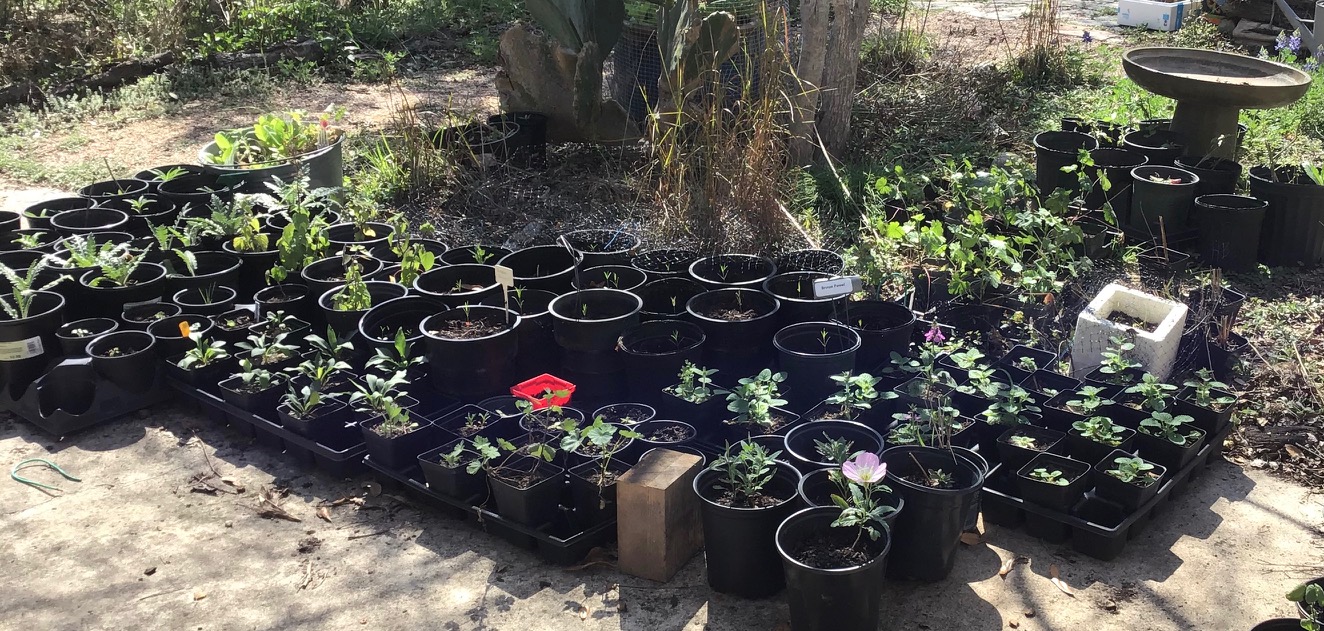
How Does Plants x Donation Work?
We list plants and seeds available from our members below.
If you are a member with plants to share, let us know and we will include them.
If you see plants on the list that interest you, let us know and we will connect you to the member those plants.
No contact information or name will not be made public on our website. All communications about the plants will be solely between the member with plants and the individual interested in the plants. Members may also choose to offer their plants in exchange for other plants. Plant and seed availability is subject to change.
We would like to encourage those who receive plants to make an optional donation to our chapter in return for plants that would normally have been sold at our semi-annual sales (we suggest $3 for 4” pots, $5 for gallons, $2 for seeds). This revenue funds our grant program, scholarships program, and chapter activities. There is no obligation to donate or exchange plants.
Let’s Get Started!
The following plants and seeds have been identified as available from our members. Availability is subject to change.
| Common Name | Scientific Name | Water Use | Light Requirement | Soil Moisture | Duration | Bloom Color |
|---|---|---|---|---|---|---|
| Baby Blue Eyes | Nemophila phacelioides | Medium | Part Shade | Dry | Annual | Blue & Purple |
| Blue Curls | Phecelia congesta | Medium | Sun, Part Shade | Dry | Annual, Biennial | Blue & Purple, Pollinator |
| Chili Petin | Capsicum annuum | Low | Sun, Part Shade, Shade | Moist | Perennial | White |
| Daisy, Engelmann/Cutleaf | Engelmannia peristinia | Medium | Sun | Dry | Perennial | Yellow & Orange |
| Eastern Gammagrass | Tripsacum dactyloides | High | Part Shade | Moist | Perennial | Grasses & Succulents |
| Gaura, White | Oenothera lindheimeri | |||||
| Germander, American | Teucrium canadense | High | Part Shade | Moist | Perennial | White |
| Goldenrod | Solidago altissima | Medium | Sun, Part Shade | Moist | Perennial | Yellow & Orange |
| Greenthread | Thelesperma filifolium | Low | Sun | Dry | Annual | Yellow & Orange |
| Gregg's Tube Tongue | Justicia pilosella | Low | Part Shade | Dry, Moist | Perennial | White, Pink, Purple |
| Indian Blanket | Gaillardia pulchella | |||||
| Mexican Hat | Ratibida columnifera | |||||
| Milkweed, Antelope Horns (seeds) | Asclepias asperula | Medium | Sun | Dry, Moist | Pollinators | |
| Pink Mint | Stachys drummondii | Annual | Pink, Lavender | |||
| Rock Rose | Pavonia lasiopetala | Low | Sun, Part Shade | Dry | Perennial | Red & Pink Blooming |
| Sedge, Cedar | Carex planostachys | Perennial | ||||
| Skullcap, Heartleaf | Scutellaria ovata ssp. bracteata | Low | Part Shade, Shade | Dry | Perennial | Blue & Purple |
| Straggler Daisy | ||||||
| Sunflower, Common (seeds) | Helianthus annuus | Medium | Sun | Dry | Annual | Yellow |
| Texas Nightshade | Solanum triquetrum | Perennial | White & Violetn | |||
| Velvetweed | Oenothera curtiflora | Annual | White, Pink | |||
| Whitebrush, Bee-brush | Aloysia gratissima | |||||
| Wild Petunia | Ruellia nudiflora | |||||
| Winecup, Standing Annual | Callirhoe leiocarpa | Low | Part Shade | Moist | Annual | Pink & Red |
| Zexmenia | Wedelia acapulcensis var. hispida | Low | Sun, Part Shade | Dry, Moist | Perennial | Yellow & Orange |
Don’t See A Plant You Want In The List?
A few of our members are licensed nursery growers in Texas who may have native Texas species of interest. Please text them directly:
- Jerry Morrisey – Texas Friendly Plants – 210 382-2614
- Drake White – The Nectar Bar – 210 844-2381
- Donald Gerber – Pollinatives – 210-846-7099 – info@pollinatives.com
